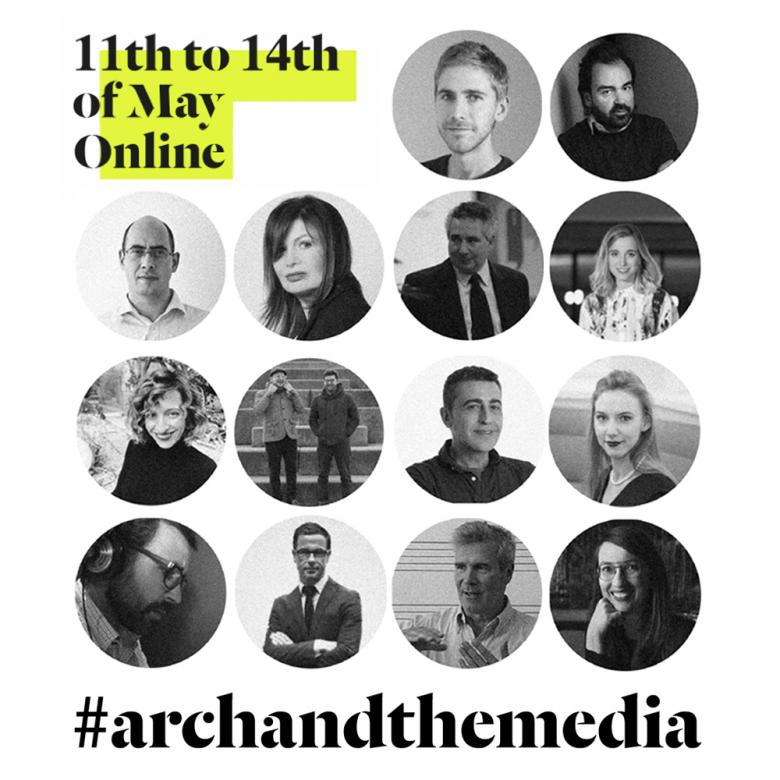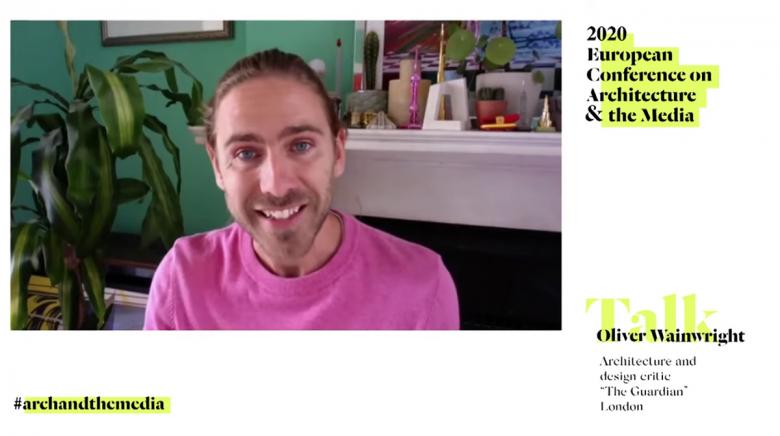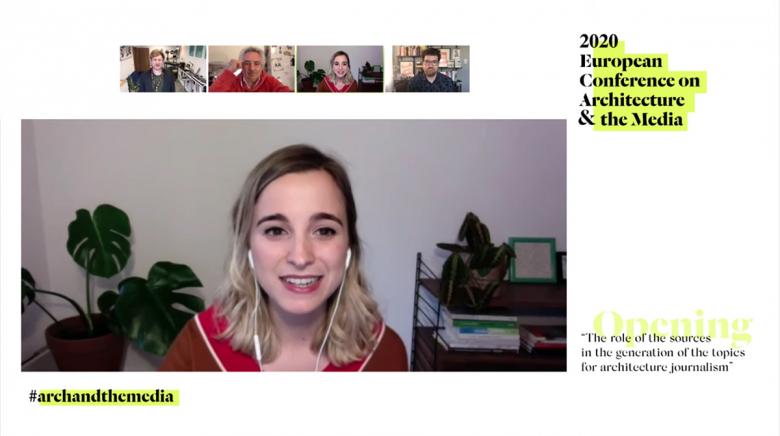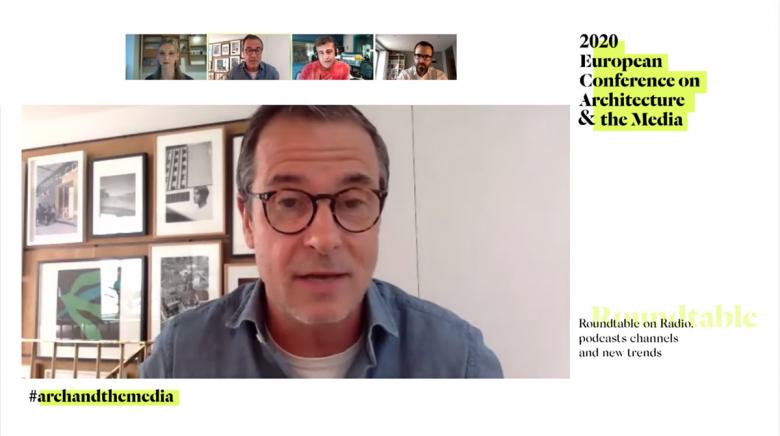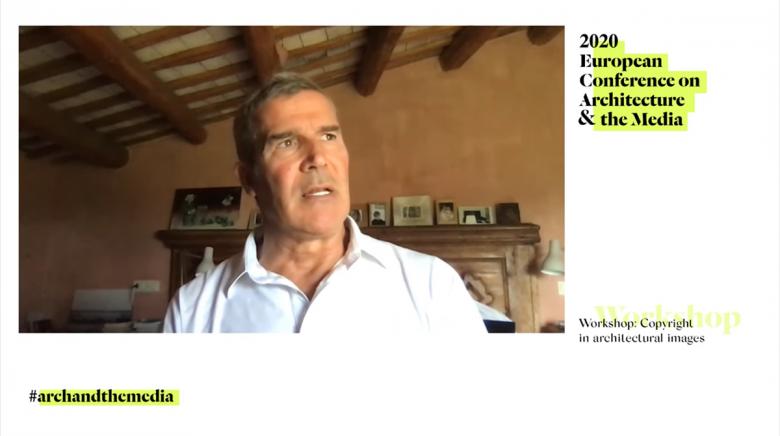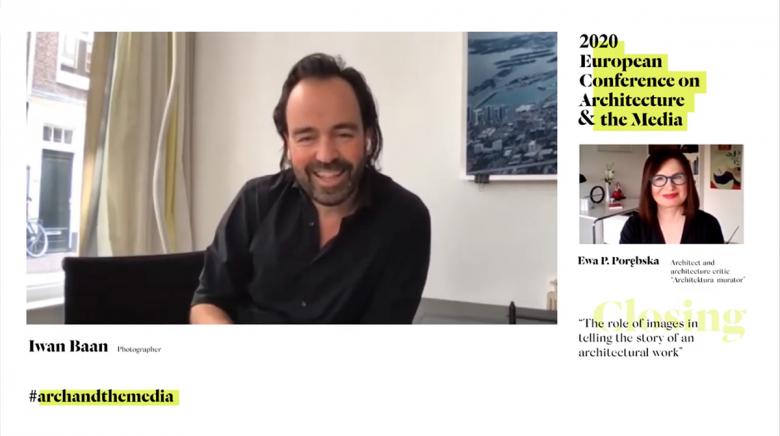Architecture & the Media 2020 Recap
John Hill
8. June 2020
Image: Fundació Mies van der Rohe
The second Architecture & the Media conference, organized by the Fundació Mies van der Rohe, took place May 11 - 14, 2020, two years after the inaugural event was held at the Barcelona Pavilion. While the COVID-19 pandemic pushed the gathering of journalists and others involved in the dissemination of architecture through the media to an online format, it did not dilute the ambitions of the program.
The conference paralleled the first one from 2018, with opening and closing keynotes and a series of panel discussions in between, each one on a different aspect of the media landscape. But whereas the first event was focused on the words written about architecture in print and online, the second edition looked mainly at the audio-visual realm: photography, radio, and television. Curated by Miriam Giordano, communications consultant at Labóh and director of the Italian and Spanish platforms of World-Architects, the four-day event consisted of thirteen live and recorded presentations and discussions, all of which can be watched via the foundation’s YouTube page.
The below recap goes in the order of the event as it unfolded online, highlighting some of the more interesting points brought up by the presenters. Each speaker, it should be noted, responded to a template with around a half-dozen questions, including:
- How much space do you dedicate to architecture in your group? Is there a specific point of view on architecture that is preferred and sought after?
- Can you tell us about a success story with one of your pieces? What made it so well appreciated by the audience?
- And the opposite case, when a piece you really liked did not have the welcome you expected?
- In your opinion, is it a challenge for architecture to gain visibility in the cultural/society/politics/economy sections of a news media? For which reasons?
Opening Conversation
Screenshot of opening presentation by Oliver Wainwright
In the opening talk Oliver Wainwright spoke about his experiences as architecture critic for The Guardian, a position he has held since 2012. His job comes with a mandate of 2,500 words every week, which he can file through numerous short articles, a couple long articles, or something in between. Over time his output has gravitated toward fewer but longer articles, reflecting The Guardian readership’s preference for what he called “long, considered opinions.” Wainwright’s success stories were clearly local, with articles about affordable housing and community planning garnering the most clicks and feedback, while the opposites were Biennales and other architecture events and profiles of young architects. These two ends of the spectrum aligned with coverage directed to the general public versus coverage more of interest to architects.
Knowing your audience and communicating to non-architects were clear lessons from Wainwright’s presentation, and they were two themes that would resurface throughout the conference.
The presentation was followed by Wainwright in a live conversation with Ștefan Ghenciulescu, architect and editor-in-chief of Bucharest’s Zeppelin architecture magazine. Wainwright reiterated the importance of subject relative to audience: awards may be important to architects and institutions, but stories that confront the daily lives of people gain the most attention. Wainwright’s presence at the start of the conference seemed to align it more with the first event in 2018, with its focus on words, but the critic touched upon photography, specifically his own photographs. The Guardian often uses the photos he takes when visiting a building because the professional images made available for the press often don’t capture the perspectives needed to illustrate particular points of criticism, such as how well a building is integrated into its context. Although he doesn’t consider himself a photographer, Wainwright’s photos of North Korea are good enough to have been turned into a book: Inside North Korea, published in 2018.
Day 2 Roundtable
Screenshot of day 2 roundtable on "television, thematic channels and online video platforms"
Day two was devoted to a roundtable discussion on “television, thematic channels and online video platforms.” The participants reflected the variety of platforms under consideration, but unfortunately Carolina Rosich of Barcelona’s TV3 was unable to join, having been called away for a live story for her network. Although this hinted at the semblance of some “normalcy” returning to life after months of quarantine, it narrowed the scope of the opinions and stories offered by the remaining participants. The discussion involved Marco Brizzi, who maintains The Architecture Player, an online platform for watching videos about architecture; Adam Goss and RedMike of Spirit of Space, which crafts short films for architects about their buildings; and Núria Moliner, host of the Escala Humana architecture documentaries on RTVE.
Coming to the fore were how video is a surrogate for visiting a building, something many people are unable to do (how many people who love the Sydney Opera House have ever been?), and questions of how videos can explain the hidden aspects of buildings (environmental, social, ethical, etc.) and to whom they communicate.
While Brizzi’s platform hosts the creation of videos by others, both Spirit of Space and Moliner are content creators. Brizzi expressed his dislike for simplistic productions that don’t add to the discourse of architecture, instead promoting the possibilities that video opens up in terms of expression. Goss and RedMike, who referred to themselves as “the architecture paparazzi,” are certainly aligned with the approach preferred by Brizzi, though they spoke about their short films for Jeanne Gang, Steven Holl, and other famous architects with a bit of humility, describing video as a “corruption” of the places they are describing through moving pictures and original music. Moliner, who also moderated the discussion, captured some of the frustration sensed by architects who would like more — some! — television shows on architecture: her success story was the fact Escala Humana actually exists. Documentaries on architecture are a rarity, for sure, with less than a handful coming to mind (Grand Designs in the UK, Cool Spaces in the US, ARTE Documentary in France), most of them no longer in production.
Day 3 Roundtable
Screenshot of day 3 roundtable on "radio, podcasts channels and new trends"
The day-three roundtable moved into the aural spectrum, gathering four personalities to talk about “radio, podcasts channels and new trends.” In attendance were Iñigo Picabea, a radio journalist in Madrid covering architecture among other cultural stories; Josep Lluís Blázquez, an art historian whose online radio show, “Perspectiva” on Catalunya Ràdio, is dedicated to architecture; Rūta Leitanaitė, host of the “We Need an Architect” radio show, president of the Architecture Association of Lithuania, and moderator of the discussion; and Andrew Tuck, editor of Monocle and host of the publication’s podcast, “The Urbanist.”
With radio and podcasts, the need to speak clearly to a non-specialized audience was most pronounced, as comments about the language of architecture were raised by each panelist. Also at the fore was the popularity and importance of local architecture stories over other topics, such as awards or exhibitions.
As I listened to the participants discuss their shows, the good and the bad stories they aired, and the difficulties in providing additional coverage for a topic as niche as architecture, I couldn't help wonder how architecture — experienced visually more than the other senses — overcomes the limitations of radio. But in each case the omission of sight was seen as a positive trait. Tuck said the power of description on the radio is its strength, not a weakness. Leitanaitė aligned it with the importance of storytelling: there can be a strong image but no story. And in response to one of the questions asked via the live feed on YouTube, Picabea agreed that radio embraces a move away from the trend of iconic architecture toward other issues, while also focusing on the invisible aspects of architecture (the environmental, social, political and so forth) that are often overlooked in visual media.
Day 4 Workshop
Screenshot of workshop on "copyright in architectural images"
The morning of the last day was devoted to a controversial yet fascinating topic, “copyright in architectural images.” The workshop gathered people from law, architecture, photography, publishing, and communications. First came a presentation by Enric Enrich, a copyright lawyer who clearly explained the types of copyright relevant to architecture, some variations in copyright between countries and regions, the major types of copyright laws, the transfer of copyright, fair use, and the ways copyright protects the rights of authors. His presentation served as the foundation for the discussion that followed. Although it was marred by some technical issues that could be expected when holding a conference online, the discussion was the most interesting of the whole conference, clearly reflecting the importance of photography in disseminating architecture but also the complications that arise when it's so easy to freely share images.
Even though the internet has changed the ease by which images can be obtained and circulated, copyright law remains the same. Therefore the rights remain with the author, be it the photographer or the architect, depending upon their contract. Infringement happens, but it is rare and is often dealt with via communication rather than lawyers.
While the online format of the event made this workshop more of a roundtable, with the Mies Foundation's Ivan Blasi moderating, the back-and-forth was lively. Also there came across a search for answers to questions and conflicting views about copyright rather than just the presentation of opinions. Adrià Goula and Duccio Malagamba, the two photographers participating in the workshop, raised important issues concerning images in the age of the internet but also the distinction between freelance versus commissioned work; they also discussed payment for photography and the photographer's role as a potential "co-creator" alongside the architect. Alejandra Liebana, communications director at Batlle | Roig, spoke about the confusion that often arises in terms of copyright when publishers approach the firm to use photos that are actually property of the photographers. From the publishing and communications side, Martin Bosshart of World-Architects and Miriam Giordano of Labóh respectively discussed the legal threats that come from automated crawlers finding certain images and requiring payment for their use, and the importance of relationships between architects and photographers, both of which often can't afford lawyers. Be they architects, photographers, or publishers, when it comes to copyright, communication clearly is key.
Closing Conversation
Screenshot of closing conversation with Iwan Baan
Peripatetic photographer Iwan Baan spoke from his home in Amsterdam, where he has been digging into his archive since travel assignments have been put on hold due to the coronavirus pandemic. Although he is one of the photographers most in-demand by architects and architectural publications today, Baan does not see himself as an architectural photographer. Instead he uses his photos to tell stories, with the people and context serving as the subject and the buildings then fulfilling the role of background. Not surprisingly, the success story recounted by Baan was the helicopter shot of Manhattan during the blackout caused by Superstorm Sandy in 2012. Like his larger oeuvre, it happened intuitively, naturally: he was in New York City for an assignment, but when it was postponed due to the storm and the power went out, he chartered a helicopter and took the once-in-a-lifetime shot that became an instant sensation when it graced the cover of New York magazine.
Baan is different than most architectural photographers, with an intuitive approach, a desire to tell stories, and a preference for lightweight gear to capture images spontaneously without having to set up a tripod or other equipment. Pervading his comments were a desire to capture the context, something traditionally omitted or downplayed in architectural photography.
Baan spoke first with Miriam Giordano and then Ewa P. Porębska, editor-in-chief of Architektura-murator magazine, who had technical issues for the first half of the conversation. In the live chat I asked Baan to address a comment by Duccio Malagamba from the workshop earlier in the day, when he said he conceives his work as an architecture critic, one using images rather than words: Does Baan do the same? Working independently, he explained, has allowed him to depart from what he called "advertising photography" and be critical of a place, in some cases capturing the "oddities" and strange juxtapositions of how buildings fit into their context.
I spoke with Baan via Zoom after the Architecture & the Media conference, delving deeper into some of the issues he raised in his presentation and the closing conversation. Read that interview here.
Related articles
-
Brooklyn Bridge Park in Photos
2 months ago
-
Architecture & the Media 2020 Recap
on 6/8/20
-
Collaging Mies
on 9/6/19
